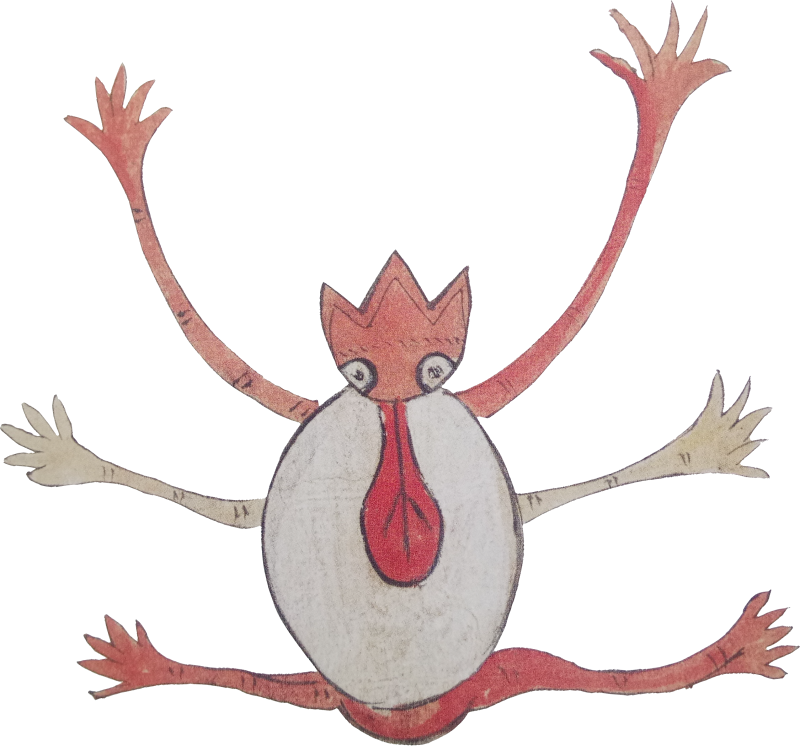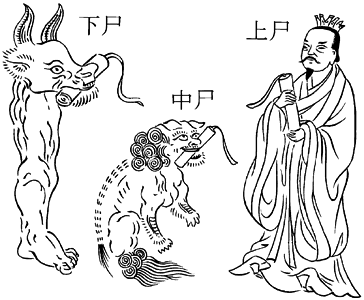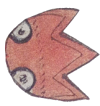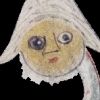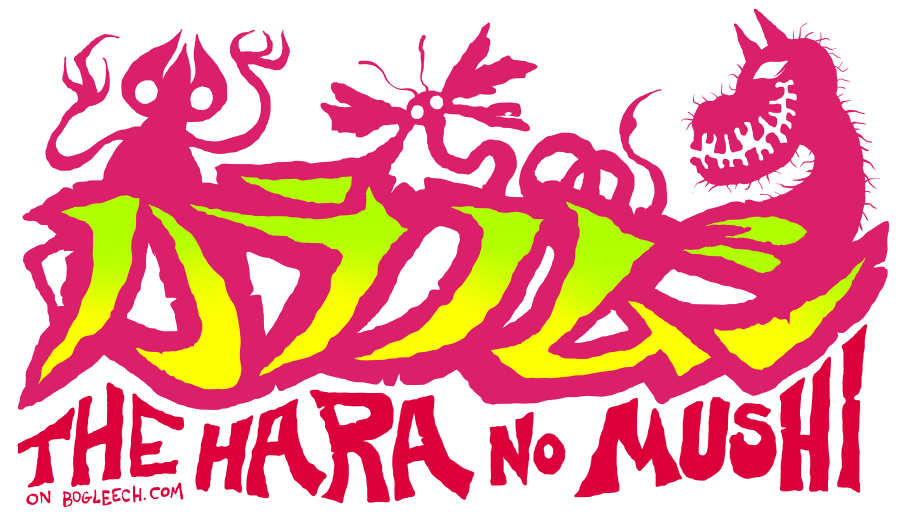
DAY ONE: THE HARIKIKIGAKI and GYOSHU
Written by Jonathan Wojcik, Researched and Translated by Rev Storm
Our 31 day October special this year is something pretty special to me. I mean, it's usually something special to me, but this year it's something that elegantly combines several of my top interests into a single package.The Harikikigaki was a book written in 1568 by an unknown resident of Osaka, Japan, and was at the time an incredibly exhaustive collection of medical knowledge - even if a great deal of it would later be disproven by the march of science. Still, while a majority of the book is devoted to only acupuncture, an entire chapter is devoted to what the other called hara no mushi, which can be more or less be translated as belly bugs.
Yes, while most of the world at the time completely overlooked the enormous significance, influence and danger posed by parasites, one mysterious artist sought to compile and explain them for the first time.
Limited to a world before the invention of the microscope or even the discovery of the cell, most of the "belly bugs" are heavily distorted from reality and many are fabricated outright by the author's imagination, yet even those they wove from whole cloth exhibit a staggeringly reasonable approximation of how parasitic organisms function. It's the parasitological equivalent of those Medeival Bestiaries we all love to laugh at: a sincere effort to catalog the natural world as best as an inherently limited understanding could have ever been expected to, with a marvelously fantastic imagination to fill in its many blanks.
We're not going to look at them in any particular order, nor are we going to include all of them. That's partially because this is a 31-day feature, yes, but it's also because most of the remaining belly bugs are somewhat interchangeable intestinal worms, and also because it would feel a shame to spoil the entire selection anyway.
And if a bunch of old, made-up bug monsters still aren't quite engaging enough for you, we're going to include a single real human parasite or other malady on each and every entry! Wherever possible, we'll choose the factual pathogen closest of all to the day's Belly Bug, but as you'll see, that won't always be within the realm of possibility...
Specifically, Gyoshu is passed between hosts who bump uglies on Koushin, a night that occurs every sixty days, and this is where the story gets especially interesting.
So how does this tie in with Gyoshu? Koushin was popularly adapted by Japan for quite some time, and it's almost as if this creature was conceived as some sort of "parody" or humorous Japanese counterpart to the three Sanshi, since it has the same habit of waiting for its host to fall asleep and sneaking out to tattle on their various sins. In Japan, however, it isn't the god of Heaven who judges mortal souls, oh no. This little bastard heads straight downstairs to Lord Enma, the king of hell, and that's not even the worst of it.
Gyoshu's most prominent feature is said to be its long, flapping tongue, which is why it talks and talks and never seems to shut up. It doesn't just go blabbing about everything you've ever done wrong, but includes the things you've only thought about, and perhaps most alarmingly the things you've only dreamed about, which we all know you don't even typically have any control over. Making no distinction between reality and fantasy, it lumps everything together in its babbling tirade, hoping that it can get Enma mad enough to throw you right into the flames of jigoku. Each Hara no Mushi comes with a list of "symptoms," but only this one's symptom is merely divine punishment.
Does it even qualify as "punishment" if most of it is a crock of lies? It's not enough that it lives in your crotch. It's also a mind reader, a snitch, and it hates you. You're supposed to have fun all night to keep the Sanshi from tattling, but if you're hoping to factor a horizontal tango into that equation, Gyoshu is just waiting to screw you over anyway. Literally the only "cure" given for this parasite is to just not have any sex until Koushin is over, and if you do, you'd better make sure you really never, ever fall asleep on any other Koushin to come.
Design Review:
Aesthetically, Gyoshu works well as the unofficial "face" of the body bugs. The pale, egg-shaped body, six long limbs, flower-shaped head and long, cartoonish tongue are all immediately memorable, and feel much more like a modern science fiction design than the kinds of mammaloid and humanoid beings common to its era. That flower shape is even supposed to be its mouth, the despite the location of the tongue, a type of mouth common to modern creature designs but only really present in the nematoda when viewed at great enough magnification, and it's not the last belly bug that's going to sport one.Conceptually, Gyoshu is a little less exemplary of the Hara no Mushi, since it's a much more "supernatural" than "medical" threat, though the book, like the culture that spawned it, doesn't really draw a line between the two and had no reason to believe it was supposed to.
TODAY'S REAL PARASITE: Pthirus pubis
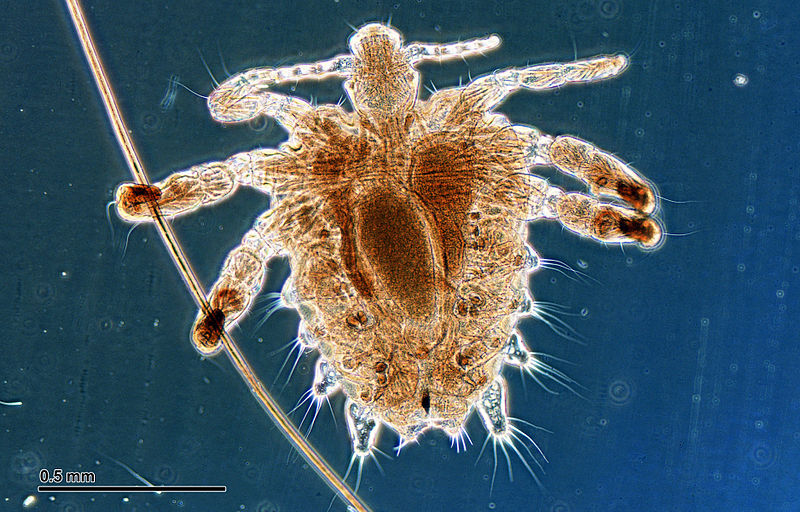
Photo: Doc. RNDr. Josef Reischig, CSc.
Interestingly enough, Gyoshu's name is also the Japanese term for pinworm, but it otherwise shares nothing in common with the tiny nematodes, other than of course that mouth, and there's no possible way the author could have known that a pinworm had tripartate lips.....could there?No, from its overall outline to its habitat, Gyoshu was almost surely inspired by the humble "pubic louse" or "crab louse," an insect of the order pthiraptera. What's really interesting about this entire group is that they afflict only mammals and birds, having evolved alongside the development of fur and feather coats in vertebrates as far back as the dinosaurs. Like many parasites, they tend to be extremely host specific, meaning that the louse of a particular rodent species may find even another, closely related rodent to be inhospitable, and as a general rule, there is only one louse species per host species...with the notable exception of us humans.
Homo sapiens, you see, is one of the only mammals in the world with hairy areas separated by vast, empty deserts of relatively barer skin, as well as one of the few mammals that can have such drastically different textures and densities of hair in these isolated forests. Consequentially, we are the only animal known to have different species of louse that may inhabit different parts of our anatomy, and even "caught" them from two different animals. It seems that the human head louse shares genetic ancestry with the lice of chimpanzees, but the human public louse is a descendant of the louse Pthirus gorillae, and you get no special prize for guessing whose louse that was.
This is around the point at which the commentors on other articles ask "which one of us boned a gorilla???" because most people only have a concept of "crabs" in the context of STD education. Crab lice, however, can establish themselves in any suitable hair anywhere on the body - including beards, armpits or frizzy, curly head hair, too - and are found everywhere on the body of a gorilla. Our ancestors happened to make a pretty well-known habit of hunting, eating and skinning almost every other animal they ever encountered, and probably didn't take the time to rid them of all their bugs first, if they didn't merely see those bugs as a free portable snack reserve themselves. Even then, the transfer could have begun as far back as the very first time a hominid ever sat down in the same spot a gorilla had just been napping.
Crab lice, like our other lice, feed exclusively on our blood through long, thin, needle-like mouth parts, and cement their eggs or "nits" directly to the host's hairs. These hatch into nymphs, rather than larvae, which means that the little ones already closely resemble adults. Fortunately, while obnoxious and embarrassing, crab lice are otherwise basically harmless. They don't transmit disease, they're easy enough to cure at home with the right resources, and as far as we know they do not slip out at night to gossip about you with the devil.
